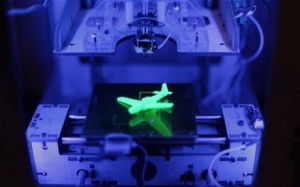 The next big thing seems to be 3D printing. Last year, it enjoyed extended attention because of a variety of breakthroughs. It’s important to keep in mind what it can do and what it can’t, though.
The next big thing seems to be 3D printing. Last year, it enjoyed extended attention because of a variety of breakthroughs. It’s important to keep in mind what it can do and what it can’t, though.
What it can do is pretty amazing, ranging from potentially life-changing to kind of scary. Just scanning the Google News feed for “3D printers” brings up an implantable cartilage and a gun and gun magazine. These things can be made with at-home or non-industrial printers that range from a few hundred dollars to a few thousand. As it becomes more well-known and popular, that price is only going to drop.
There is even an open-source 3D printer, called RepRap, that is constantly under development from hundreds of volunteers around the world. At this point, it is making respectable prints and it is designed to print parts for others to make their own RepRap printer. That is democratic access to technology and the means of production in the most obvious manner currently imaginable.
The most recent biggest buzz is that 3D printing will allow you to print up your own house, which is what a Dutch architecture firm is about to experiment with. According to TechCrunch’s Jordan Cook, it may have a wider implication:
Sure, 3D printing is fun and cute. And products like the Makerbot and Form 1 will most certainly disrupt manufacturing, even if it’s only on a small scale. But the possibilities of 3D printing stretch far beyond DIY at-home projects. In fact, it could entirely replace the construction industry.
What it could also do is usher in an era of small-scale democratic manufacturing. The access of the means of production available to all for little to no-cost, and therefore the ability to live in abundance without relying on a major corporate-oriented or state-oriented system. That is exciting.
Just a couple of weeks ago, we brought up Paul Krugman’s worry that robotics could remain in the domain of elite capital owners. Others are a bit more optimistic that won’t happen, but I took a middle of the road approach. That is, we could go either way pretty easily, depending on how we choose to arrange our economic and education system.
I feel like 3D printing offers us a chance to go the way of the optimists. I may be getting ahead of myself here, but I feel like this is a shorter leap to make than offing the entire construction industry. Currently, we have the example of a robotic toy that was completely 3D printed. I also came across a robotic hand that is made mostly from 3D printed parts. These are not as neat or well-done as some of the heavily researched and manufactured robots, but it is still impressive for what it is and for what it could become.





